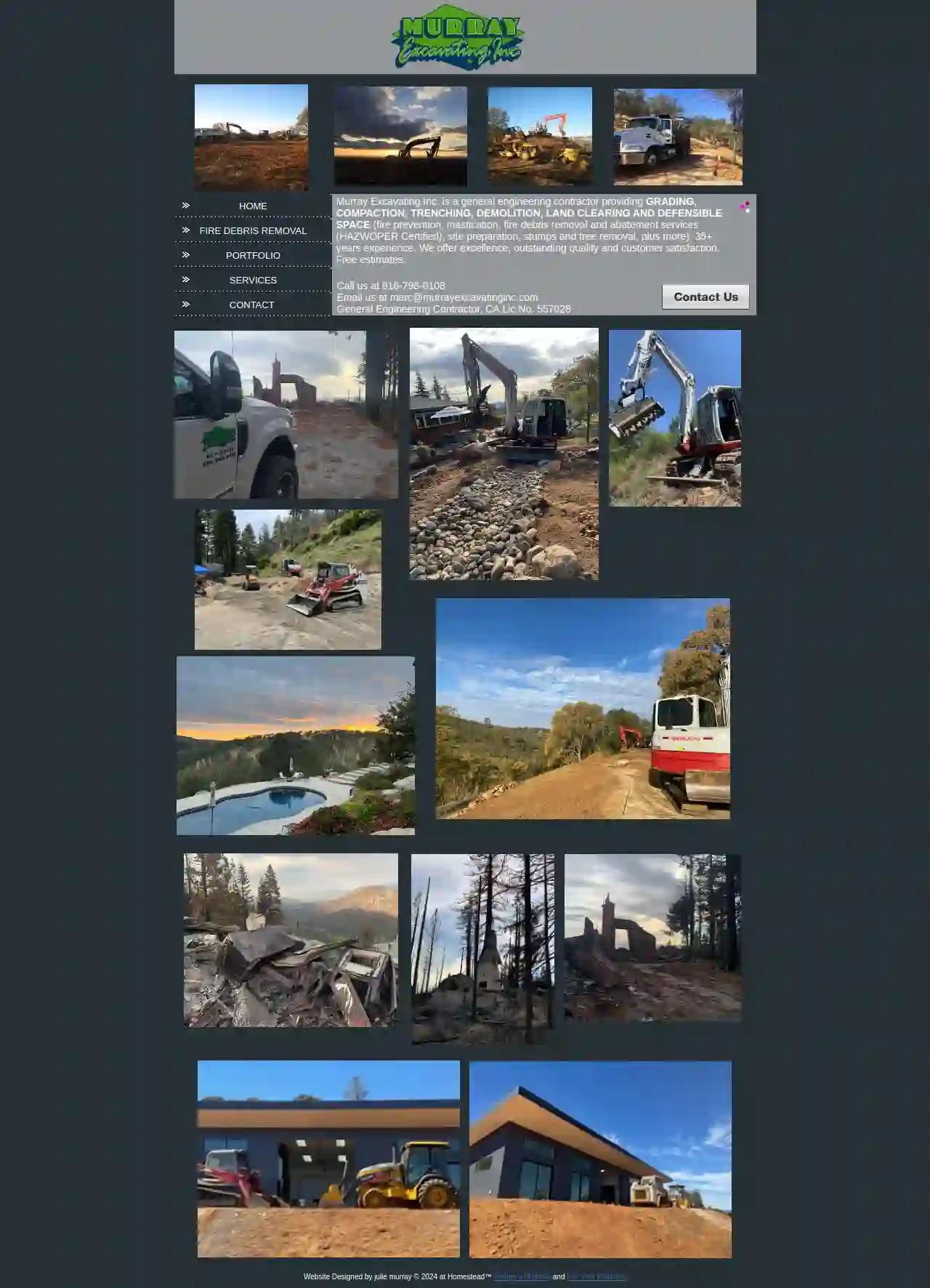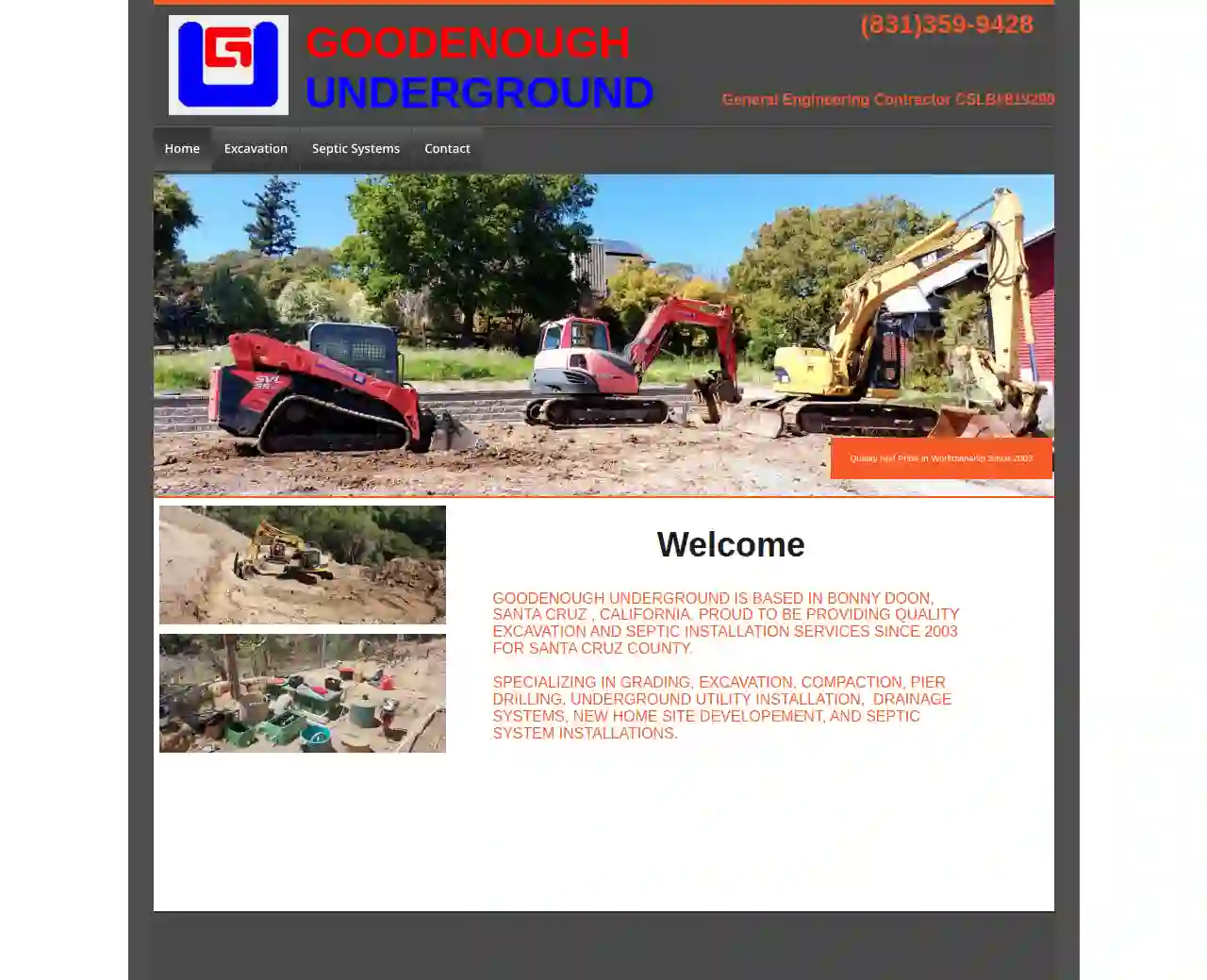Excavation Contractors Pinole
Top Excavation Contractor in Pinole
Receive multiple Trenching Services quotes for your project today! Compare profiles, reviews, accreditations, portfolio, etc... and choose the best deal.

Summit Building Group
51 reviewsSacramento, USSummit Building Group: Your Vision, Our Expertise At Summit Building Group, we are passionate about transforming your vision into reality. We are a full-service construction company specializing in a wide range of projects, from residential remodeling and additions to commercial building construction and tenant improvements. Our commitment to quality craftsmanship, meticulous attention to detail, and collaborative approach ensures a seamless and rewarding construction experience. We understand that building or renovating your space is a significant investment, and we are dedicated to providing you with the highest level of service and expertise. Our team of experienced professionals, including architects, designers, project managers, and skilled craftsmen, work together to deliver exceptional results that exceed your expectations. Whether you are dreaming of a stunning kitchen remodel, a spacious home addition, or a modern commercial building, Summit Building Group is your trusted partner. We are committed to building lasting relationships with our clients, providing transparent communication, and delivering projects on time and within budget. Contact us today to schedule a free consultation and let us help you bring your vision to life.
- Services
- Why Us?
- Gallery
Get Quote
Murray Excavating Inc. Backhoe Service, Excavating and General Engineering Contractor
51 reviewsLatrobe, CA, 95682, USAbout Murray Excavating Inc. Murray Excavating Inc. is a general engineering contractor with over 35 years of experience, specializing in a wide range of services including grading, compaction, trenching, demolition, land clearing, and defensible space preparation. We are committed to providing excellence, outstanding quality, and exceptional customer satisfaction. Our team is HAZWOPER Certified and equipped to handle projects of all sizes, from small residential properties to large-scale commercial developments. We understand the importance of fire safety and have extensive experience in fire debris removal and clean-up. We have worked on major fire events such as the Caldor, Santa Cruz, NAPA, and Paradise Fires, providing comprehensive services that include debris removal, demolition, utility capping, and erosion control. Our goal is to restore your property to a safe and usable condition, while ensuring compliance with all federal and local regulations. Beyond fire-related services, we offer a comprehensive range of solutions for land development and improvement. Our services include brush clearing, mastication, fuel reduction, and land reclamation for various purposes such as recreation, grazing, access, and new construction. We are dedicated to helping you create a safe and sustainable environment for your property. Our team is equipped with a wide range of heavy machinery, including skip loaders, backhoes, excavators, masticators, mowers, dozers, compactors, and 10-wheelers, allowing us to handle any project efficiently and effectively. We are committed to providing our clients with the highest level of service and expertise, ensuring their complete satisfaction.
- Services
- Why Us?
- Gallery
Get Quote
Sierra Construction
51 reviewsPO Box 5080, Sonora, CA, PO Box 5080 Sonora, 95370, USAbout Us We are an A and B licensed contractor located in Tuolumne County, CA. Our expertise is in grading and excavation. We offer high quality service for affordable prices that put us a step ahead of the competition. PROMPT AND RELIABLE At Sierra Construction our clients are our priority. We take pride in doing what we say we will do in regards to project timelines/budgets and we go the extra mile to make sure our customers are completely satisfied with our work. Call us today and find out what we can do for you.
- Services
- Why Us?
- Gallery
Get Quote
US Trenchless Inc.
4.971 reviews5716 Folsom Blvd., #290, Sacramento, 95819, USUS Trenchless: Your Trusted Partner for Trenchless Plumbing Solutions US Trenchless is a leading provider of trenchless plumbing services in Sacramento, CA. We specialize in a wide range of services, including sewer line repair, replacement, and inspection, as well as water line repair and replacement. Our team of experienced and certified technicians is committed to providing our clients with the highest quality service and workmanship. Why Choose US Trenchless? We understand that plumbing issues can be stressful and disruptive. That's why we strive to make the process as easy and hassle-free as possible for our clients. We offer: Free estimates 24/7 emergency service Competitive pricing A 100% satisfaction guarantee Our Services We offer a wide range of trenchless plumbing services to meet the needs of our residential and commercial clients. Our services include: Sewer line repair and replacement Water line repair and replacement Pipe bursting Horizontal directional drilling Sewer line inspection Hydro jetting Water heater installation and repair Water softener installation Water filtration system installation Our Team Our team of experienced and certified technicians is dedicated to providing our clients with the highest quality service and workmanship. We are committed to using the latest technology and techniques to ensure that our work is done right the first time. Contact Us Today If you are experiencing a plumbing issue, don't hesitate to contact US Trenchless. We are available 24/7 to provide you with the help you need. Call us today for a free estimate.
- Services
- Why Us?
- Our Team
- Testimonials
- Gallery
Get Quote
Land Clearing Group
55 reviewsOrange, USAbout The Land Clearing Group We help homeowners and businesses clear and prepare their property for the next phase of their project. Whether you need simple brush clearing or a total clear and site prep, we are here to help. Land Clearing Group is more than just a single company, we are composed of a large team of industry professionals that can handle any land clearing project; no matter the task. Our team of pros gives property owners a combined 50+ years of experience. We have worked in land projects across the state of Florida, Land Clearing Central Florida is quickly become the industry leader in customer satisfaction.Understand that this is our top priority on all land clearing solutions. Operating with such high corporate standards is not an easy task to achieve and can be solely attributed to the multiple professionals involved. Since the start of the company, we have operated on 3 principles which are visible on every project we do: We love this stuff! We will show up at each job: on time, ready to work and have fun. There will be crystal clear communication with the property owners at all times: before, during and after all projects. Your property will always be treated the same way we would treat our own property.
- Services
- Why Us?
- Gallery
Get Quote
Excavating Contractor Los Angeles
59 reviewsLos Angeles, USWelcome to Bobcat Excavating Services Los Angeles As an excavation services and bobcat services provider in Los Angeles, we at BSLA – Bobcat Services Los Angeles help our clients with any processes that involve removal of earth from the ground, transfer of earth from one site to another, backfilling of earth to previously excavated spaces, and modification of sites to suite various clients’ needs. Are you building or remodeling your outdoor space? Chances are that we can be of help. If you searched for “excavators near me” for you got to the right place! We are experts when it comes to excavation, bobcat services, compacting, filling and grading. We work on residential sites, commercial sites, and industrial locations. We are licensed and insured and all our machine operators are vigorously skilled in handling our heavy machinery and providing precision results.
- Services
- Why Us?
- Gallery
Get Quote
JS Company Inc. - Js Co.
53 reviewsBrentwood, USABOUT JS COMPANY AN AFFORDABLE CONTRACTOR YOU CAN TRUST JS Co. is a locally owned, insured and licensed general engineering firm founded in 1998. Its mission is to become your preferred contractor in the San Francisco Bay Area, offering a gamut of services to complete any project. There is no “too small” or “too large” job for us. Count on JS Co. to provide speedy and fair estimates whether you are a homeowner, a business representative, an insurance adjuster or a public official. Our team of friendly and talented professionals is ready to exceed your expectations starting with your initial contact until the completion of your project. Review our strength in numbers and learn more about some of our happy clients in our References section. 0 + YEARS OF EXPERIENCE 0 + PROJECTS COMPLETED 0 + SATISFIED CLIENTS 0 + CONSTRUCTION LICENSES LET JS COMPANY BECOME YOUR PREFERRED CONTRACTOR JS has delivered hundreds of projects to hundreds of clients for over two decades. We look forward to assisting you with your next project. Give us the chance to earn your business! Call Us at 415-460-2100
- Services
- Why Us?
- Testimonials
- Gallery
Get Quote
Edri Construction
4.851 reviews701 Cortland Ave, San Francisco, 94110, USYour Trusted Construction Partner: Excellence from Demolition to Finishes People are looking for a reputable and reliable contractor. It does indeed represent us, but what sets us apart is the ability to be attentive to the customer and guide him patiently, from the demolition stages to the impeccable finishes, with professionalism as the common thread between each and every stage. We handle even the most complex projects entirely in-house, utilizing our own team of experts and advanced equipment. This practice allows us to accurately budget every project, ensuring transparency and efficiency throughout the process. Thanks to our satisfied customers, our growth is largely fueled by referrals. We strive to maintain this momentum by consistently exceeding expectations and delivering exceptional results. At Edri Construction, we bring expertise, reliability, and a commitment to excellence to every project we undertake.
- Services
- Why Us?
- Gallery
Get Quote
GOODENOUGH UNDERGROUND INC.
57 reviewsBonny Doon, USGOODENOUGH UNDERGROUND IS BASED IN BONNY DOON, SANTA CRUZ , CALIFORNIA. PROUD TO BE PROVIDING QUALITY EXCAVATION AND SEPTIC INSTALLATION SERVICES SINCE 2003 FOR SANTA CRUZ COUNTY. SPECIALIZING IN GRADING, EXCAVATION, COMPACTION, PIER DRILLING, UNDERGROUND UTILITY INSTALLATION, DRAINAGE SYSTEMS, NEW HOME SITE DEVELOPEMENT, AND SEPTIC SYSTEM INSTALLATIONS.
- Services
- Why Us?
- Our Team
- Gallery
Get Quote
EARTHTEK Grading and Paving
4.915 reviews39899 Balentine Dr, Ste 200, 39899 Balentine Dr Ste 200, Newark, 94560, USSan Jose's Leading Asphalt Contractor Full Service Asphalt, Concrete & Site Work. Residential & Commercial Free Estimate EARTHTEK 5-Star Paving Company in San Jose When you’re looking for the best in asphalt, concrete, and site-specific operations, the EARTHTEK crew offers the experience, skill, and dedication you can rely on. When you absolutely need to make sure your project is done on time, within budget and correctly, we have you covered. Our commitment to our clients is what makes us one of the best asphalt contractors in San Jose. Whether your project is simple driveway sealcoating or a 100,000 stall parking lot, the team at EARTHTEK is equipped to handle it. We are a family-owned and operated company that is fully licensed and insured. Our years of operation combined with high-quality materials means you’ll be able to rely on our work decades to come. Why Choose Us EARTHTEK is a family owned and operated paving company local to the San Jose. The services offered by us are custom designed and planned out to fit your specific needs while we aim to maintain and build upon your area’s surrounding beauty. That being said, we know what we’re doing and we won’t waste your time bogging you down with an avalanche of phone calls, texts, or in-person meetings. We know you have things you need to take care of outside of your paving needs and that many items on your agenda far outweigh micromanaging your concrete work. Our reputation speaks for itself - and our customer feedback has given that reputation a megaphone. Get in touch with us today to start discussing your concrete and asphalt needs.
- Services
- Why Us?
- Testimonials
- Gallery
Get Quote
Over 22,076+ Excavation Contractors on our directory
Our excavation contractors operate in Pinole & beyond!
ExcavationHQ has curated and vetted the Best Excavation Pros arround Pinole. Find the most reliable contractor today.
Frequently Asked Questions About Excavation Contractors
- Determine the Area: Measure the length and width of the area you want to fill. Multiply them to get the area in square feet (or meters).
- Determine the Depth: Measure the difference between the existing grade and the desired grade (how much you need to raise the ground). This is the depth of fill required.
- Calculate Volume: Multiply the area (step 1) by the depth (step 2) to get the volume in cubic feet (or meters).
- Account for Compaction: Fill dirt compacts when it settles, so add 10% to 25% to the calculated volume to account for compaction. The exact percentage depends on the type of fill material.
- Topsoil Removal: Stripping the fertile topsoil layer from a site, often preserving it for landscaping.
- Trench Excavation: Digging long, narrow trenches for utilities (pipes, cables) or foundations.
- Basement Excavation: Removing earth to create a space for a basement beneath a structure.
- Pool Excavation: Digging a precise hole for installing a swimming pool.
- Roadway Excavation: Removing earth and preparing the ground for road construction.
- Demolition Excavation: Clearing debris and preparing the site after demolition.
- Channel Excavation: Creating channels for drainage or irrigation.
- Clear the Area: Remove any obstacles, including vehicles, outdoor furniture, landscaping features, or structures, from the excavation zone and surrounding area.
- Mark Existing Features: Identify and mark underground utilities, septic tanks, sprinkler systems, or other buried elements you want to protect.
- Protect Landscaping: Use tarps or fencing to shield trees, shrubs, gardens, or other landscaping elements from damage.
- Provide Access: Ensure the excavation contractor has clear access to the work area, including gates wide enough for equipment.
- Discuss Logistics: Coordinate with the contractor regarding parking arrangements, material delivery, and any special instructions or concerns you might have.
- Determining Soil Suitability: Assessing whether the soil can support the intended structure or load.
- Recommending Foundation Types: Advising on the appropriate foundation design based on soil characteristics.
- Addressing Drainage and Erosion Issues: Providing solutions to manage water runoff and prevent erosion.
- Evaluating Slope Stability: Assessing the risk of landslides or soil movement on slopes.
- Building on challenging soil types (expansive clay, loose sand, etc.)
- Constructing large or complex structures
- Excavating near slopes or retaining walls
- Addressing drainage or erosion concerns
How do I calculate how much dirt I need for fill?
What are the different types of excavation?
How do I prepare my property for excavation?
What is a soil engineer, and do I need one?
How do I calculate how much dirt I need for fill?
- Determine the Area: Measure the length and width of the area you want to fill. Multiply them to get the area in square feet (or meters).
- Determine the Depth: Measure the difference between the existing grade and the desired grade (how much you need to raise the ground). This is the depth of fill required.
- Calculate Volume: Multiply the area (step 1) by the depth (step 2) to get the volume in cubic feet (or meters).
- Account for Compaction: Fill dirt compacts when it settles, so add 10% to 25% to the calculated volume to account for compaction. The exact percentage depends on the type of fill material.
What are the different types of excavation?
- Topsoil Removal: Stripping the fertile topsoil layer from a site, often preserving it for landscaping.
- Trench Excavation: Digging long, narrow trenches for utilities (pipes, cables) or foundations.
- Basement Excavation: Removing earth to create a space for a basement beneath a structure.
- Pool Excavation: Digging a precise hole for installing a swimming pool.
- Roadway Excavation: Removing earth and preparing the ground for road construction.
- Demolition Excavation: Clearing debris and preparing the site after demolition.
- Channel Excavation: Creating channels for drainage or irrigation.
How do I prepare my property for excavation?
- Clear the Area: Remove any obstacles, including vehicles, outdoor furniture, landscaping features, or structures, from the excavation zone and surrounding area.
- Mark Existing Features: Identify and mark underground utilities, septic tanks, sprinkler systems, or other buried elements you want to protect.
- Protect Landscaping: Use tarps or fencing to shield trees, shrubs, gardens, or other landscaping elements from damage.
- Provide Access: Ensure the excavation contractor has clear access to the work area, including gates wide enough for equipment.
- Discuss Logistics: Coordinate with the contractor regarding parking arrangements, material delivery, and any special instructions or concerns you might have.
What is a soil engineer, and do I need one?
- Determining Soil Suitability: Assessing whether the soil can support the intended structure or load.
- Recommending Foundation Types: Advising on the appropriate foundation design based on soil characteristics.
- Addressing Drainage and Erosion Issues: Providing solutions to manage water runoff and prevent erosion.
- Evaluating Slope Stability: Assessing the risk of landslides or soil movement on slopes.
- Building on challenging soil types (expansive clay, loose sand, etc.)
- Constructing large or complex structures
- Excavating near slopes or retaining walls
- Addressing drainage or erosion concerns